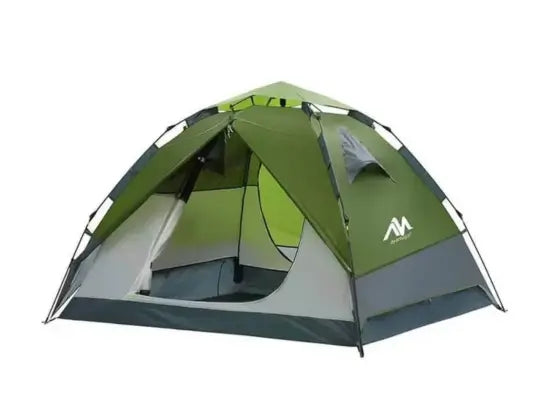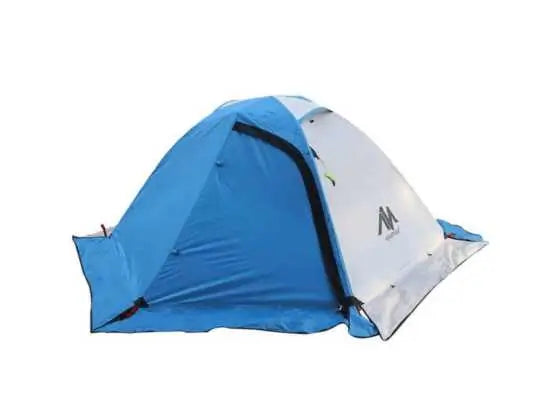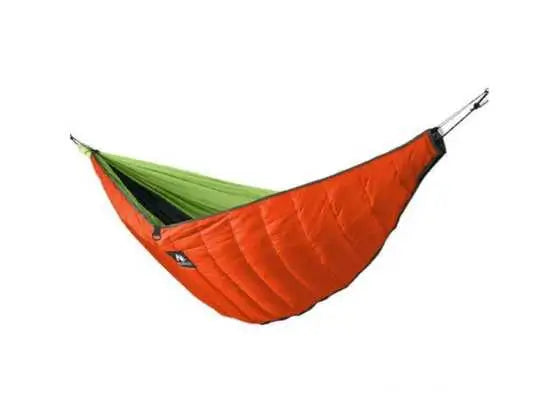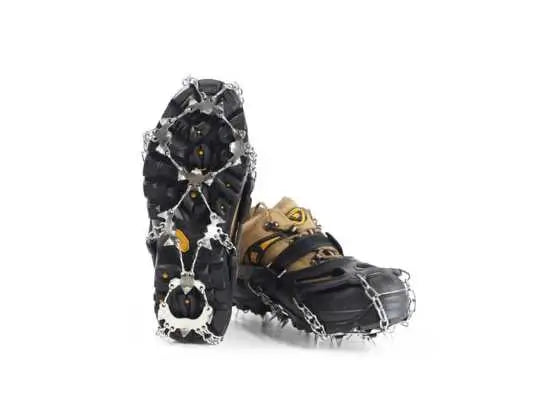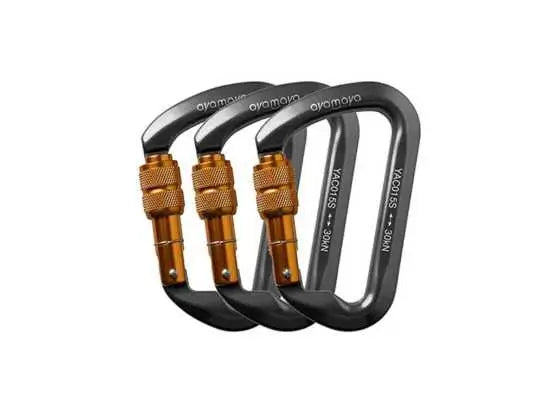Tent camping is a relaxable and enjoyable outdoor adventure. Gazing at the stars and cooking over a campfire and hiking through the woods are experiences that would take you away from the daily grind. But one thing that can ruin your camping tour is having condensation in your tent. Now have you experienced waking up with moisture on the inside of your Flysheet? Everyone would have experience tent condensation. Condensation in your tent becomes a highly unpleasant resting place. For a wanderlust traveler, it is one of the unavoidable consequences of Camping and backpacking with a tent.
However, condensation is a natural process that occurs with all tents in both double and single-wall tents. Read on to know a lot more about the causes of tent condensation and how to prevent condensation in our tent. Go ahead.

1. What causes tent condensation?
Tent condensation forms when humid or warm air encounters a colder surface like a roof or interior wall of your tent. You can see this effect in a mug of cold beer on a sunny day. Also, it's the same process that occurs when you take a hot shower, and vapor makes your bathroom mirror wet. Steam is water vapor in a gaseous form cooled when it hits the mirror, converting it to liquid water droplets that cover the mirror with moisture.
In the same way, the warm air inside moves out to the Flysheet, which is cooler. This is due to outside cool air in the environment. Therefore, it results in condensation on the underside of the Flysheet. The water saturates your tent fabric or drip through a mesh window. In addition, tent condensation is also caused due to moist air expelled from your lungs when you exhale. Keep reading to have a quick on how to prevent tent condensation.
Here are the conditions that brings on condensation to your tent
- On clear, still cold nights
- After the afternoon rain, with a clear, still night with low nigh temperatures
- In wet rainy conditions, with no wind and night time temperature drops
2. How to Prevent Condensation?
Always prevention is better than cure. And If you are wondering about how to prevent tent condensation, then you are in the right place. The following ways can reduce the amount of tent condensation that forms at night:
Ventilate Your Tent
Did you know that each person exhales about a liter of water at night while they are in a deep sleep? This is one of the leading causes of condensation inside a tent. Creating air flow can help remove some of that moisture outside the tent. Leave your screened windows open, which is a great way to do it. Rolling up or unzipping them from the entry of your tent is another best way to create a cross-breeze to keep the air inside the tent from becoming too damp.
Ventilating your tent is the most effective way to prevent condensation in your tent. Ventilating your tent reduces the internal humidity and promotes proper airflow. You can also leave the upper and lower sections of the door open if the weather condition permits. A lot of Camping tents provide low and high venting options, and you can open them to let the moist airflow out.

A Double-Layer Tent
It will be worth your while to use a double-layer tent if you are going on a traditional camping trip. Using a double-layer tent is the best way to prevent condensation in your camping tour. The inner layer tent provides condensation-limiting breathability while the outer layer supplies the weather protection. The inner layer of the tent is water repellent and breathable; it lets vapor pass through and prevents condensed water from falling on you most of the time. Overall, it creates a more comfortable space to live in the wetter conditions handling internal condensation better.

Use a Large Rain Fly
If it rains while you are camping, it makes even worse and harder to keep the campers and tent dry. At those times, using a large rain fly will be a beneficial one and makes your experience a memorable one even on rainy seasons. Rainfly is designed to allow condensation to run down the insides of the tent to the ground. Taut your tent with the large rain fly far enough away from the inner tent to ensure adequate airflow. Also, rain fly stops rain from getting inside the tent as most of the tents are not waterproof. It can provide you a condensation-limited camping experience.
Check your tent before Camping
Always performing a "dry run" and setting up your tent up in the yard ahead of the camping trip is beneficial. Inspect the zippers, vents, and seams for damage and repair them if necessary. Spray water over the top of your tent to ensure that it does not have tears or rips that allow water to get inside. Use a tent sealer and apply it to the entire tent to keep your tent in optimal water-repellent condition.
Pitch on dry ground
The floor can be a prime area for condensation to form, and you do not want your sleeping bags and gear to get wet. Everyone loves Camping on the lush and green grass. Pitching a tent here may cause condensation due to a high humidity level. Pitching on the dry ground can make your camping experience better than on pitching on wet grass. Also, avoid camping too close to water where humidity is higher than normal.
However, there are certain tricks to keep the floor warm and dry when you set the tent. Place a 'footprint tarp,' which is heavy-duty tarp that's slightly smaller than the size of the tent floor on the ground where the tent will be. Then fill the floor space with a waterproof foam mat. Cover the mat with a blanket which is heavy enough to stay in place, and then put down the sleeping bags. This eventually gives insulation between the ground and your sleeping area and keeps condensation away from you and your bed.
Don't Cook in Your Tent
When it comes to condensation in your tent, cooking inside the tent is a way to add a lot of moisture in minimum time. But cooking inside the tent is always no for numerous reasons. Cooking inside a tent causes a lot of vapors, which eventually leads to condensation. And if there is no proper ventilation, they will quickly turn into moisture. No matter how careful you are in your Camping, there are chances that something will catch on fire. Also, cooking causes food smells when you are camping, which you don't like. Enjoy by setting up a camping kitchen outside and grab some campfire cooking tools to experience the beauty of nature.
Avoid Storing Wet Clothes and Gear in the Tent
The excellent way to avoid the issue of condensation in your tent is to best to keep clothing and gear dry in the first place. Don't store wet clothing and remove wet clothes or shoes from your tent at night. Dry them outside or out inside a sack to minimize night-time humidity. Store your towels in watertight plastic bags because they won't be very helpful if they get wet, too. Also, reduce the additional moisture sources inside your tent.
Use a Dehumidifier
Generally, there are two types of dehumidifiers to use inside a tent, chemical and rechargeable. A chemical dehumidifier type is a product like Damprid Moisture Absorber Tub that uses non-toxic calcium chloride salts to draw the water from the air. Also, you can use the disposable hanging moisture removers and hang them out of the way on the inside the tent supports. Using a rechargeable is the most effective way to prevent condensation inside your tent that works for an entire camping trip on one charge.
Prevention and Maintenance
If you are wondering about the two effective ways, then prevention and maintenance are the best ways to keep your tent comfortable and dry. Start by bringing clothing and sleeping bags that repel water that absorbs it. Check your tent for leaks before the camping trip and bring extra tarps. Weather permitting, open up the windows, keep all of your wet clothing apparels and let the air push some of the humidity out of your tent. Keep wet clothing and shoes out, and wipe down the moisture as it collects.

3. What Should I Do When the Tent Gets Wet From Condensation?
The best way to remove the condensation from the surface and stop any drips is to wipe the walls with a cloth or towel and take as much water from the fabric as possible. Keep a supply of clean towels on hand to wipe down the tent walls and the inside of the rain fly. Avoid pressing against the sides of the tents on polycotton fabric tents as this can cause water to seep through.
Dry and ventilate your tent as much as you can. Besides, pitch the tent little early in the evening so that the tent has a chance to dry out before you get into it. From time to time, shake it off and adjust the guy lines if needed. Also, remove all wet items and gears from the tent and dry them so that they do not create moisture the next night.
4. Waterproofing Problem or Condensation, How to Tell the Difference?
A lot of people may think the reason of condensation inside is the tent is due to a leaky tent. Even when it is not raining or drizzling outside your tent, you may experience condensation and water droplets inside the walls of the tent. As already said, condensation is due to humid air, or warm air encounters a colder surface like an interior wall or roof of your tent. Many campers experience condensation inside the waterproof tents too. Therefore, condensation is due to warm or humid air in your tent that encounters a cooler surface of your tent.
By now, you would know how to prevent condensation in your tent. Choose an adventurous location and enjoy the camping experience no matter what nature has to throw at you.

